Natural History Illustration – A Passion for Minutiae
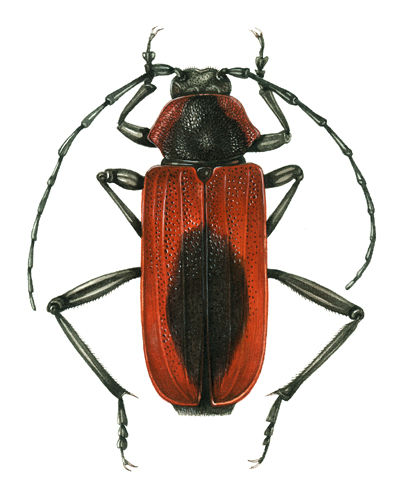
Natural history illustration exposes you to a plethora of beautiful subjects; and often the real beauty lies in the detail, in the minutiae.
At first sight a plant or animal may not seem particularly stunning, but once you get involved in its structure, and drawn into its details, it can become overwhelmingly awesome. The times I spend completely absorbed in the tiniest of details of a plant or animal are amongst the happiest of my life.
Minutiae: Botanical Illustration
With botanical illustrations, it’s invariably tiny hairs, leaf venation, details of the calyx, or compound flower-heads that draw me in.
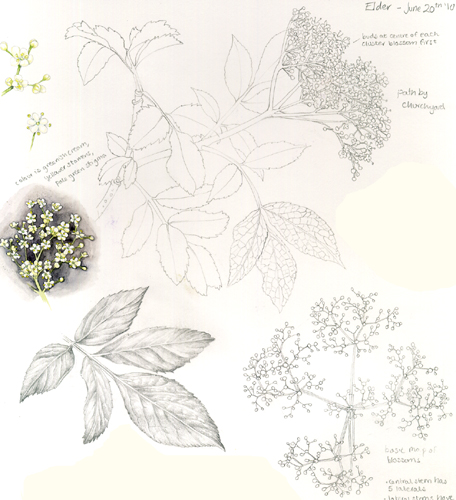
This elderflower, and the vein network of the bilberry leaves below (both from my botanical sketchbooks), required such concentration that it made my head ache, rather like algebra used to. To get the picture right, you need to draw each and every tiny flower correctly, and in correct position vis a vis all the other flowers. In the bottom right of the illustration is quite literally a simplified map of where each individual flower sat. It was the only way to steer through a froth of white. In the case of leaf veins, you need to get the spacing between the major veins and the angles of the lesser ones just right; when it meets where it’s meant to it feels amazing. When it doesn’t you can find yourself lost in the blade of a leaf.

Holding a botanical specimen in the left hand (as I do) can result in quite severe cramp; you get so lost in the detail that you forget your hand has been stationary in a gripping pose for the last three hours… (In the illustration below it was the twists and turns of the calyx of the sage plant that drew me in).
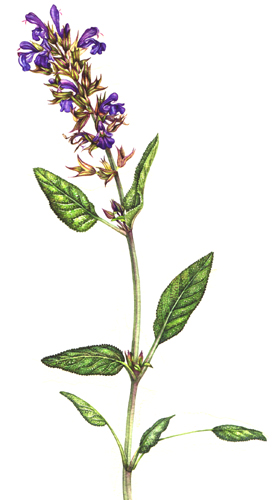
Minutiae: Insect illustration
Insects are very easy to get lost in. Wandering about in a dragonfly wing, trying to place all the veins correctly and going further and further into the detail as you approach the margins is a truly wonderful experience. The concentration is all consuming; hours pass and phone calls go unheeded as each tiny cell is observed and recorded. (This Scarlet Dragonfly was comissioned by Jersey Post and will be part of a set of stamps issued on July 4th 2013, read more here).
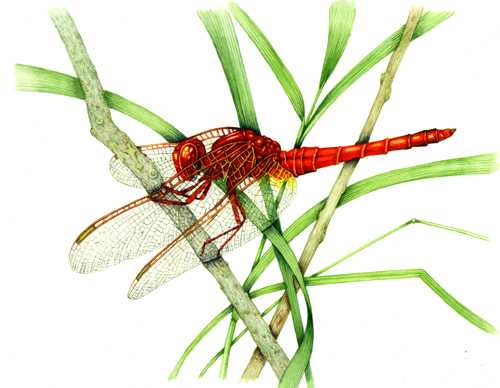
I also find it very easy to get lost in areas of anatomy where the way light and dark falls are exacting, like on this Purpuricenus kaehleri beetle’s back (let’s not even talk about the thorax!). The tiny holes or pits are dark, but the edge of each hole catches the light, and is shiny white with highlight. This slight raised edge can cast a tiny shadow across the elytra. Couple to this the presence of lines, or striae (often composed of tiny pits) and you have a real topographical landscape to navigate. Each pit is probably less than half a millimetre across, but to get close to getting it painted right you have to shrink into that scale and try to observe what you see.

Minutiae of medium: Pen and ink
In terms of mediums, working in pen and ink is the true culprit for drawing me into the minuteae. Each thin line needs to be imperceptibly blended with hundreds of tiny dots. It’s easy to get obsessed, to go closer and closer to the page and to worry about the position of each individual spot. It’s alarming, and often gratifying, to draw back from a pen and ink illustration and see that, on the whole, it looks pretty evenly blended and more or less ok.
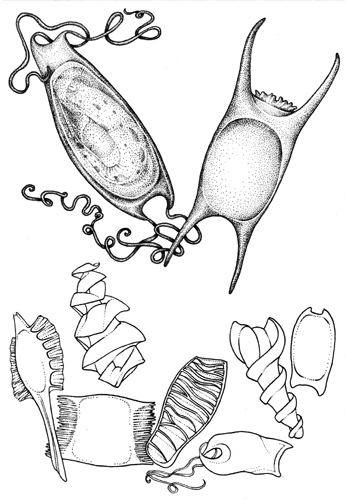
Minutiae: Returning to a normal sized world
The most alarming part of these journeys into detail is the return trip. This almost invariably is an interruption of some sort; the doorbell, a family member, an aphid crawling across the specimen. It can really do your head in, going in a split instant from staring at the anther of a tiny flower amongst hundreds of other tiny flowers to looking at the enormous blunt face of your child leering at you and demanding juice.
Once, as I was painting a flower, a blue bottle fly landed on the specimen. It seemed monumental and really scary; this giant in the city of tiny hairs on a leaf, and I’m ashamed to say I screamed in shock as it appeared. In fact, most of my journeys into minutiae end this way. A nasty shock as something on a much larger scale thrusts itself into my view and my concentration. Followed by some inappropriate vocal outburst (and quite often a spilled cup of tea).
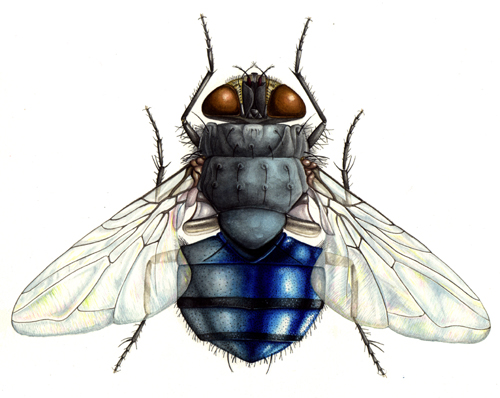
Still, it’s the tiny-ness of the detail that obsesses me, and the way that no matter how close you look, there is inevitably another layer of detail beyond what you can see or even conceive of. For me, that’s a big part of the beauty of the natural world.

